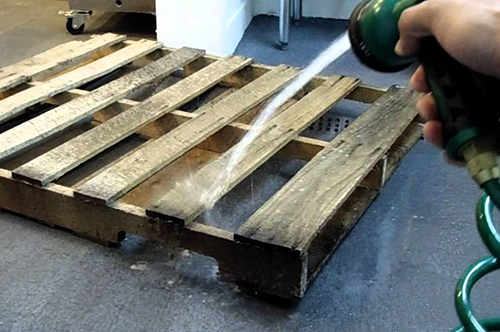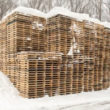A New Year of Mold-Free Pallets
Mold prevention is important and can be as easy as maintaining a clean warehouse, which reduces the amount of mold spores in the air and subsequently minimizes mildew growth.
Mold prevention is important and can be as easy as maintaining a clean warehouse, which reduces the amount of mold spores in the air and subsequently minimizes mildew growth.

Now that we’re well into the New Year, you may have let some of your resolutions slide, but here’s one you can keep—preventing mold from affecting your pallets.
No one likes the ‘M’ word and, oftentimes, the mere mention of the word mold can cause panic. But, in the case of wood pallets, mold is only a surface nuisance and does not cause any structural damage. It can, however, pose problems for the products stacked on the pallet, especially if its food.
Mold prevention is important and can be as easy as maintaining a clean warehouse, which reduces the amount of mold spores in the air and subsequently minimizes mildew growth.
Other tips are as follows—
If your pallets will not have contact with food products, ask your pallet provider about long-term mold guard treatment options (ranging from three to six months). This can involve application of prophylactic fungicides which are applied by dipping or spraying the lumber shortly after sawing. There are a variety of chemical treatments available; the most popular contains copper-8-quinolinolate or chlorothalonil. Be sure to discuss your options with the pros at Rose Pallet. Or, for more information, consult this article on Mold Remediation courtesy of the National Wooden Pallet & Container Association.
 Jul 01, 2020
Jul 01, 2020
With the help of industry resources, we’ve compiled a short pallet industry quiz that may leave you stumped!
continue reading double_arrow Feb 21, 2024
Feb 21, 2024
We all know that prolonged exposure to harsh winter weather is harmful to humans and pets. But what about your pallets? Can they withstand outdoor storage in the winter? Here’s what you need to know…
continue reading double_arrow






